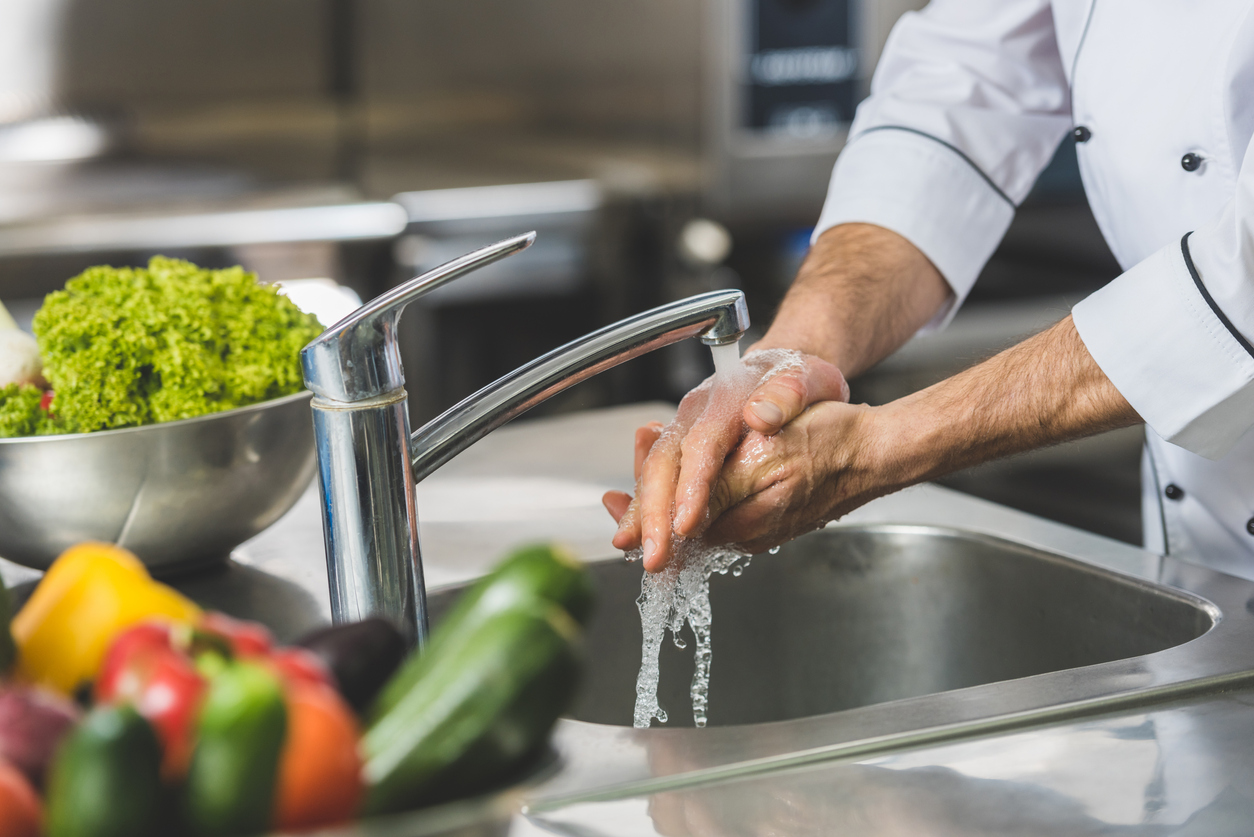WCHD MENTORS GUAM AND SAIPAN IN NACCHO MENTORSHIP PROGRAM
Over the past decade, WCHD’s Food Safety Program has participated in the Retail Program Standards Mentorship Program hosted by the National Association of County and City Health Officials (NACCHO) as both as a mentee and a mentor. The mentorship program connects health departments from around the country to work together in achieving the FDA Retail Program Standards. This year, WCHD was selected to mentor both the Department of Public Health and Social Services in Guam and the Commonwealth Healthcare Corporation in Saipan, the largest island in the Northern Mariana Islands. During the program, Washoe County will be holding monthly food safety meetings with Guam and Saipan to coach and assist these health departments half a world away.
UP AND COMING
2022 Risk Factor Study: The 2022 Risk Factor Study is currently underway! Inspectors are visiting various food establishments to collect food safety data, which will help determine the most common risk factors that contribute to foodborne illness in Washoe County. These visits are not regulatory inspections.
Special Event Season: WCHD is expecting to see a robust special events season in 2022! WCHD’s Special Events Team works in conjunction with the Cities of Reno and Sparks, as well as Washoe County, to ensure these events are organized to set up food vendors for success and to ensure you’re eating a safe food product: whether you’re eating a corndog at the National Championship Air Races, pasta and homemade sauce at the Great Italian Festival, or a breakfast burrito at the Great Reno Balloon Races, you’re getting a safe product.
AMC Classes: WCHD’s Food Safety Program will be traveling to Phoenix, AZ next month to collaborate with the Maricopa County Health Department in developing a new Active Managerial Control (AMC) class for food establishments in Washoe County. Active managerial control means the purposeful incorporation of specific actions or procedures by industry management into the operation of their business to attain control over foodborne illness risk factors. The AMC class will be available to food establishments later this year.
Food Safety Fact

Norovirus—You don’t want it! Norovirus is an extremely contagious virus that causes diarrhea and vomiting. It is spread when an infected person has poop on their hands (even if hands were washed after using the bathroom) and touches food or surfaces, then you touch the same surface or eat the food they touched—and now you’re sick, too! GROSS, we know! You only need to consume 18 viral particles to become ill, which is a really small amount! It’s no wonder Norovirus is the leading cause of foodborne illness in the U.S. To help prevent Norovirus, WCHD inspectors educate restaurant employees of the importance of staying home from work if they’re sick, building good handwashing practices, and practicing no bare hand contact with ready-to-eat foods in restaurants.
RISKY BUSINESS
The 5 most common risk factors that contribute to foodborne illness are improper holding temperatures,
inadequate cooking, poor personal hygiene, contaminated equipment, and unsafe sources. Each quarter we
will highlight one risk factor, steps you can take to mitigate it, and link resources available for you to use.
Poor personal hygiene
Practicing good handwashing and having no bare hand contact with ready-to-eat foods are essential habits to build to keep your food safe and your customers protected from foodborne illnesses like Salmonella, Shigella, E. coli, Hepatitis A, and Norovirus. Regulations require that all handwashing sinks always be stocked with soap and paper towels, and always remain clear and accessible, to promote frequent handwashing for at least 20 seconds by employees. Additionally, employees are required to call in sick if experiencing symptoms of foodborne illnesses, such as vomiting, diarrhea, fever, and jaundice. Some ways to mitigate this risk factor are:
- Have a strong policy for employee health and hygiene. This will ensure employees are educated on when to call in sick, with what symptoms, and how long to stay out for.
- Have an ongoing training and monitoring program for handwashing and no bare hand contact. Training will help employees learn how and when to wash hands, and when to change gloves. Monitoring from management will ensure that bad handwashing practices are immediately corrected, and good handwashing practices become a habit.
- Remove barriers to hygiene. Ensure there are enough handwashing sinks in your facility to promote handwashing compliance, and that they’re always stocked with enough supplies. Avoid providing harsh soaps that can lead to skin irritation. Providing utensils, gloves, or food grade paper will help to eliminate bare hand contact with ready-to-eat food.
Standard Operating Procedures (SOP) and educational posters are useful tools to train staff, maintain active managerial control within your facility, and gain compliance if your facility routinely has issues with maintaining employee hygiene. These tools and many more are available to you in multiple languages in our Online Resource Library.

Staff must be trained on:
• when to call in sick
• how to wash hands
• when to wash hands
• when to change gloves
• how to stock handwashing sinks with supplies
• how to prevent bare hand contact with ready-to-eat foods
Resources available to you:
• Employee Health and Hygiene SOP (ENG, SPAN, CHN)
• Eliminating Bare Hand Contact with RTE Foods SOP (ENG, SPAN, CHN)
• No Bare Hand Contact with Ready-to-Eat Foods FAQ (ENG, SPAN, CHN)
• Handwashing Sign (ENG, SPAN)
• Employee Health Poster (ENG, SPAN)
• FDA Employee Health and Personal Hygiene Handbook
RESTAURANT IMPROVEMENT
Restaurant Improvement shows before and after pictures of how your health inspectors help protect you from foodborne illness in Washoe County

Picture of an unapproved cutting board made of unsealed wood, glued together, attached with wood screws, and starting to splinter. Bare wood is not allowed in food preparation areas because it absorbs moisture and is not easily cleanable.

Picture of cutting board replacement that meets WCHD Regulation requirements. Equipment must be NSF rated for sanitation or equivalent: smooth, sealed, durable, and easily cleanable.

